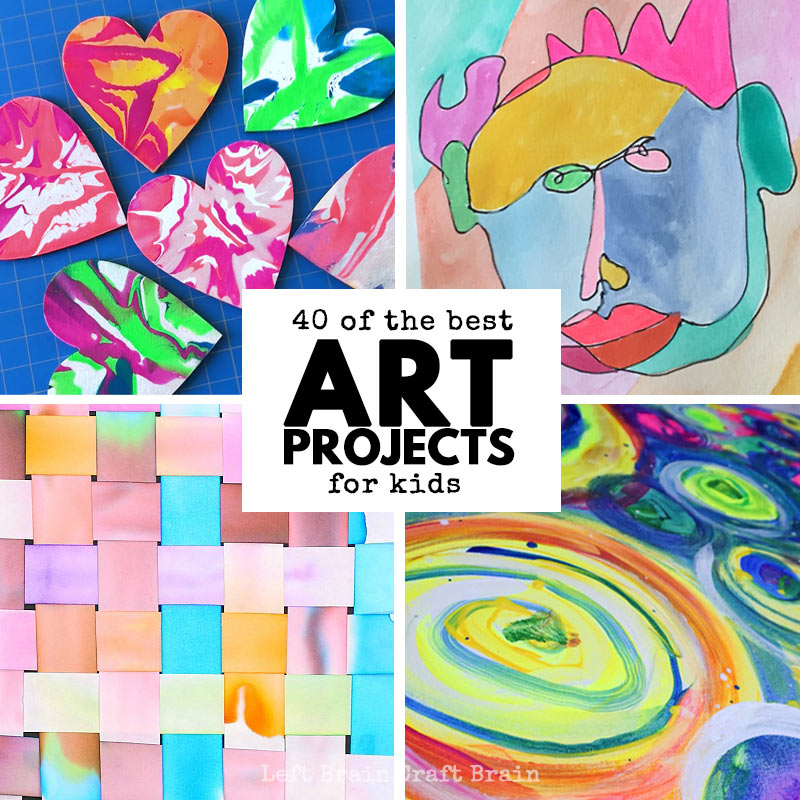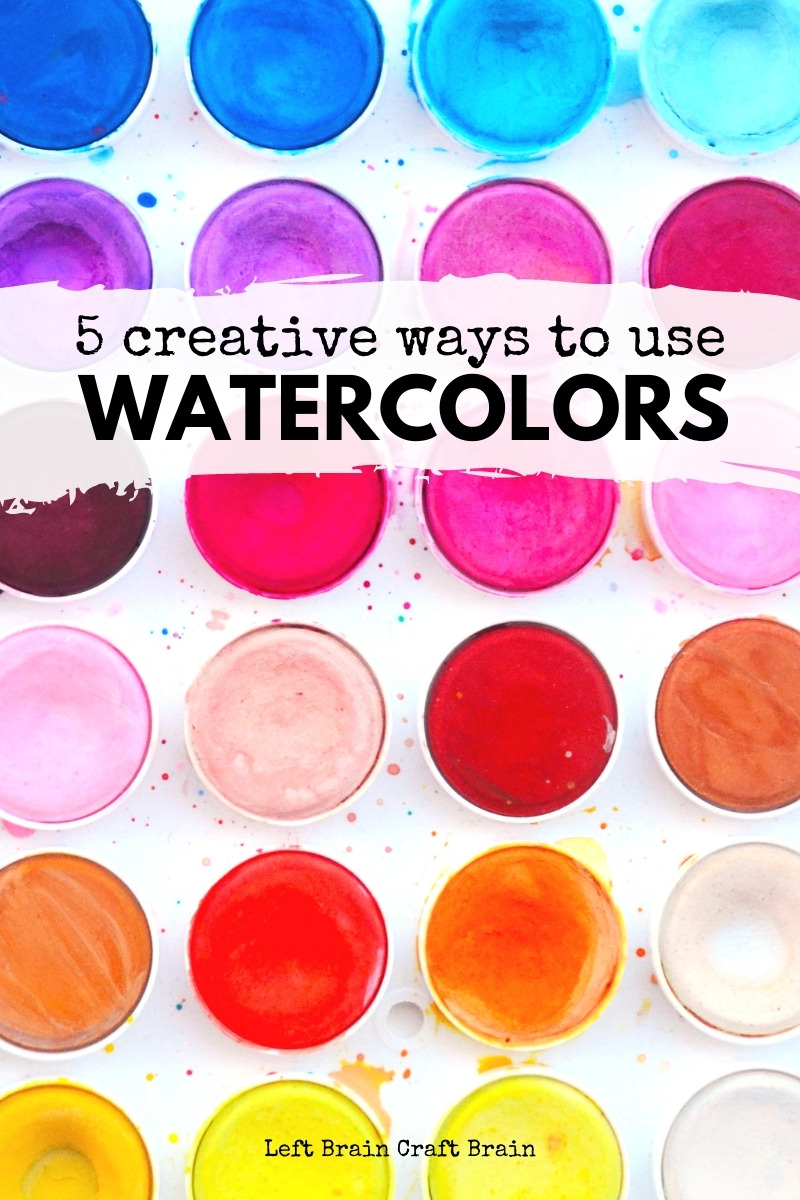Watercolors… they’re on the top of my must-have list of creative materials. They’re colorful, easy to use, relatively affordable, and so versatile. So I sat down to write this ode to my favorite pack of color that packs a punch of fun. Check out this list of 5 Creative Ways to Use Watercolors.
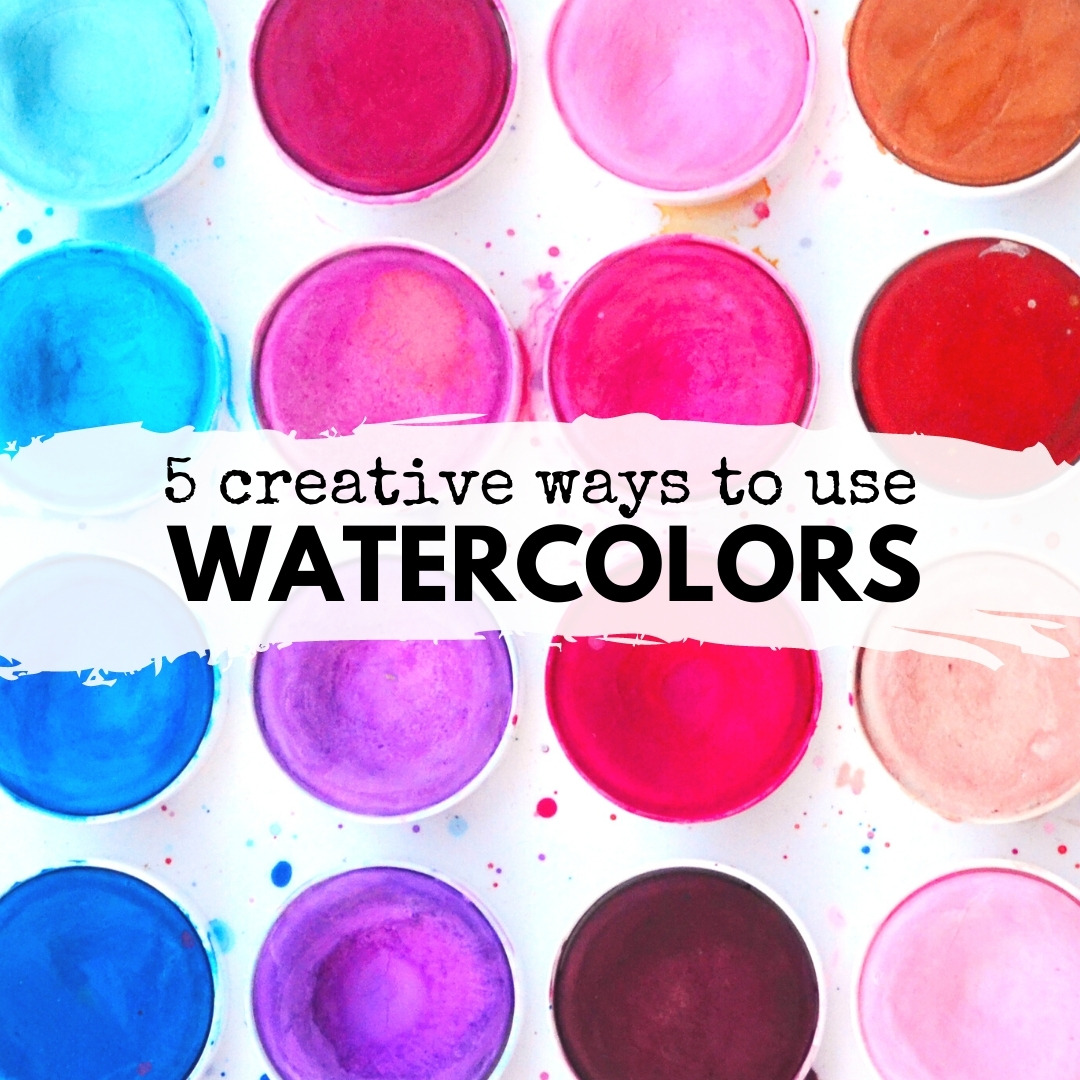
5 Creative Ways to Use Watercolors
I started writing this post as a quick little activity post. Then it morphed into something bigger… Not because watercolors are hard, but because they’re so easy!! There are so many ways to use them. To help you navigate this list of fun art and STEAM projects, here’s a helpful Table of Contents.
Types of Watercolors
Watercolors come in a few different types. They almost all can be swapped in and out for different projects, so it’s a great time to use what you have.
- Palette watercolors: These are the hard watercolors that in a pack of a variety of colors. You use them with a wet brush. I love these for low-mess painting with kids. Plus they’re a budget-friendly option, too. I was able to pick up a classroom-sized pack for $20!
- Liquid watercolors: Liquid watercolors are concentrated, colorful liquids that can be
- Tube watercolors: Tube watercolors are great for projects that need intense, vibrant colors
- Food coloring: Don’t have watercolors? Use some food coloring in a bit of water. The bonus is these are always taste-safe if you have little kids, too.
- Watercolors made from markers: My favorite trick to make some liquid watercolors is to drop some old markers into a jar filled with a few tablespoons of water. Let them sit overnight and you’ll have your own liquid watercolors!
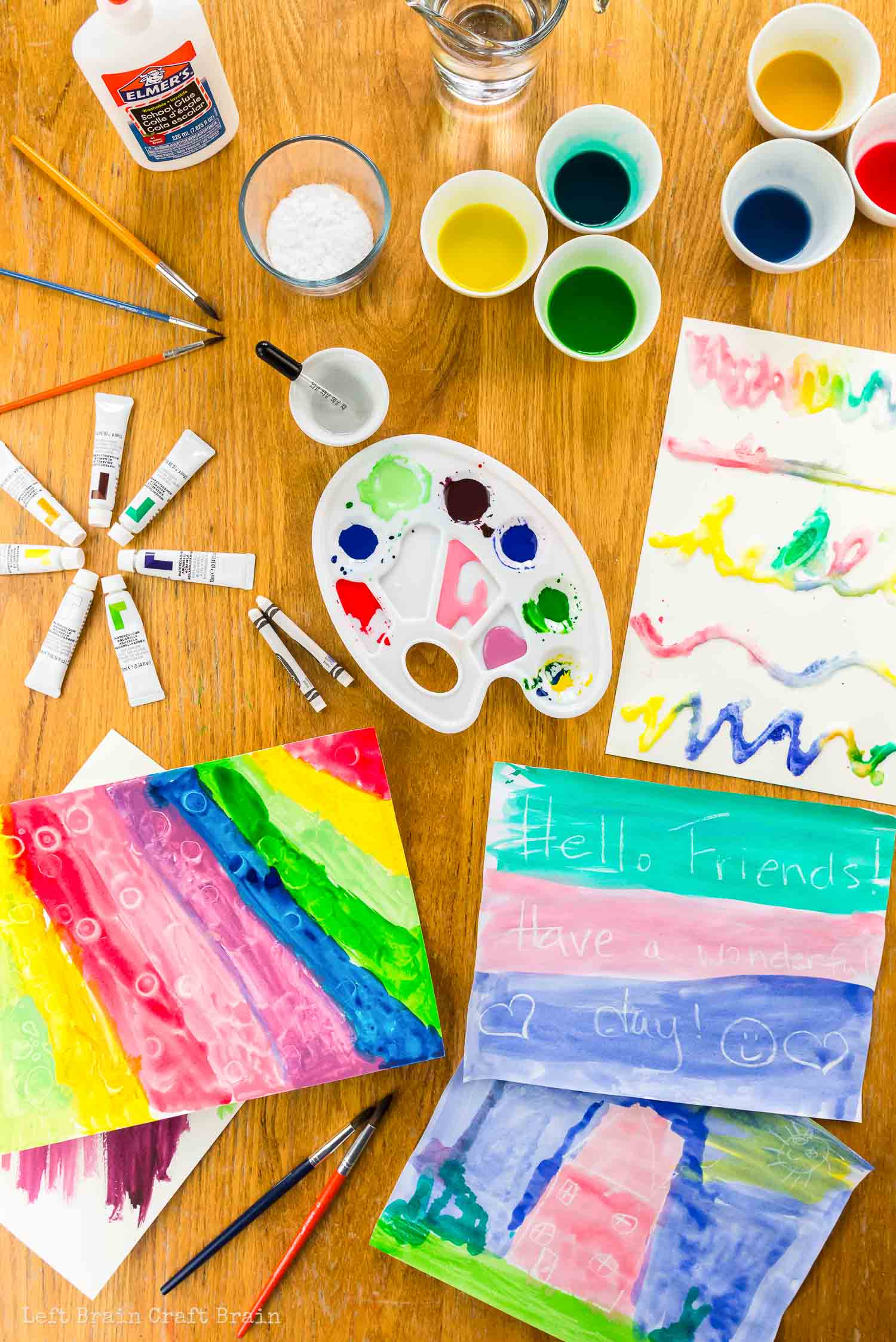
Watercolor Supplies to Have on Hand
These projects use a basic list of supplies to mix and match. They’re great to keep on hand for impromptu crafting.
- Watercolor palette
- Liquid watercolors or food coloring
- Watercolor paper or cardstock
- Brushes
- Cups for water and color
- Masking tape
- White crayon or candle
- White glue
- Salt
- Tray
- Pipette or dropper
- Rubbing alcohol
- Small squirt bottle
- Scissors
Tape Resist Watercolor Paintings
Resist is a classic form of watercolor art. Artists use various methods to protect the paper from absorbing the watercolors to leave blank or resisted areas on the artwork. There are a few ways to do it and one of the easiest ways is with masking tape or painters tape.
- Select a design that you’d like to make. It should be a solid shape that can be outlined with tape. Initials work great. You can also do patterns like stripes.
- Create your design by adding pieces of tape to the watercolor paper. Press down lightly so that the edges are flush against the sheet of paper.
- Paint with your watercolors and fill in the area inside and outside of the tape.
- Let the painting dry for at least 5 minutes.
- Gently pull off tape. Sometimes the tape sticks a bit to the paper, so if you notice it starting to tear, pull the tape from another angle to minimize it. Or go with the added texture and uniqueness the tears bring to the artwork.
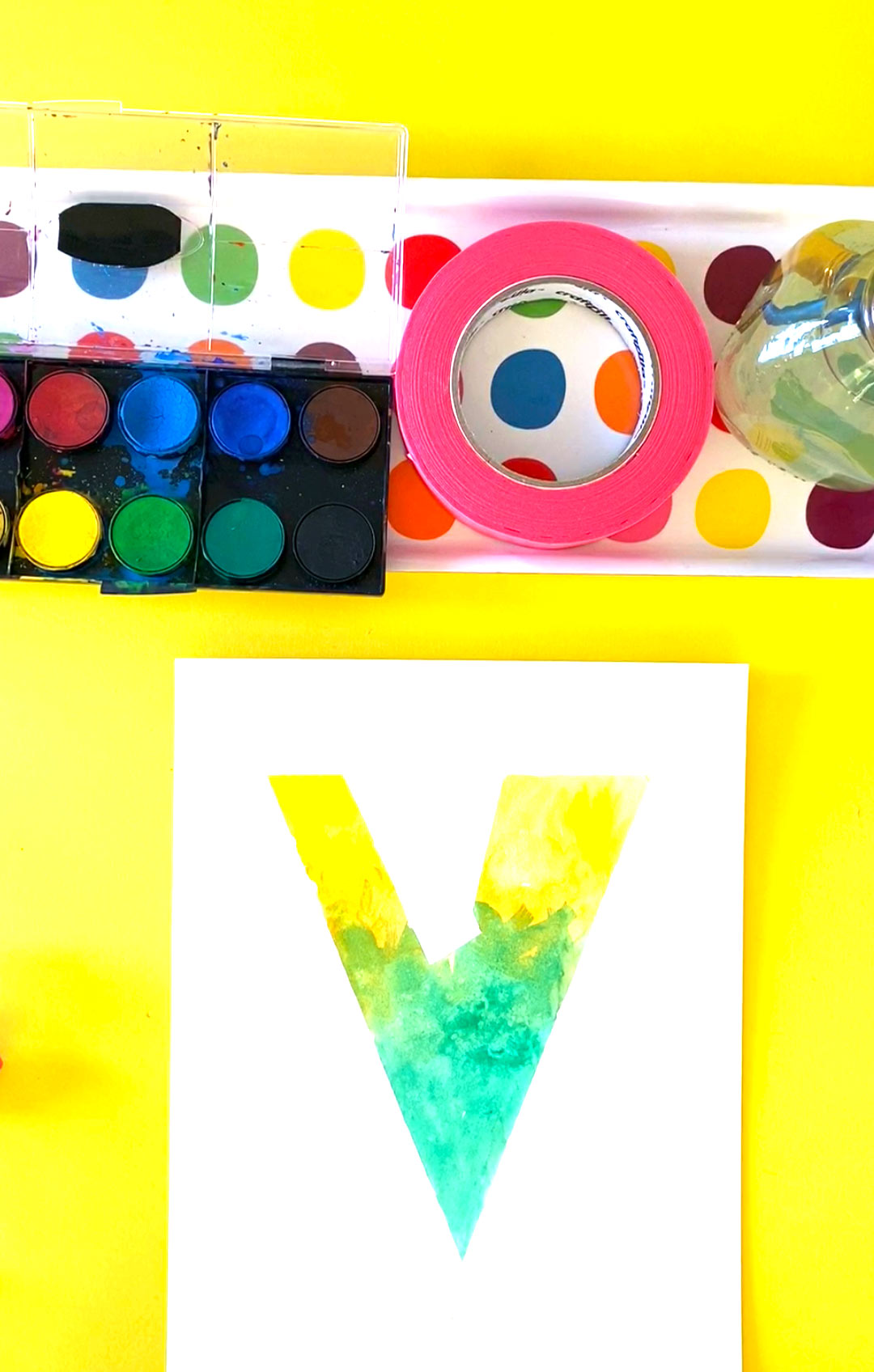
My daughter loves doing watercolor projects so she filmed this helpful DIY video for you of the tape watercolor resist project.
Crayon Resist Watercolor Art
Another great way to try resist is with a white crayon or candle.
- First, draw a design on your watercolor paper with a white crayon or the waxy end of a white candle.
- Paint over your design and watch it appear.

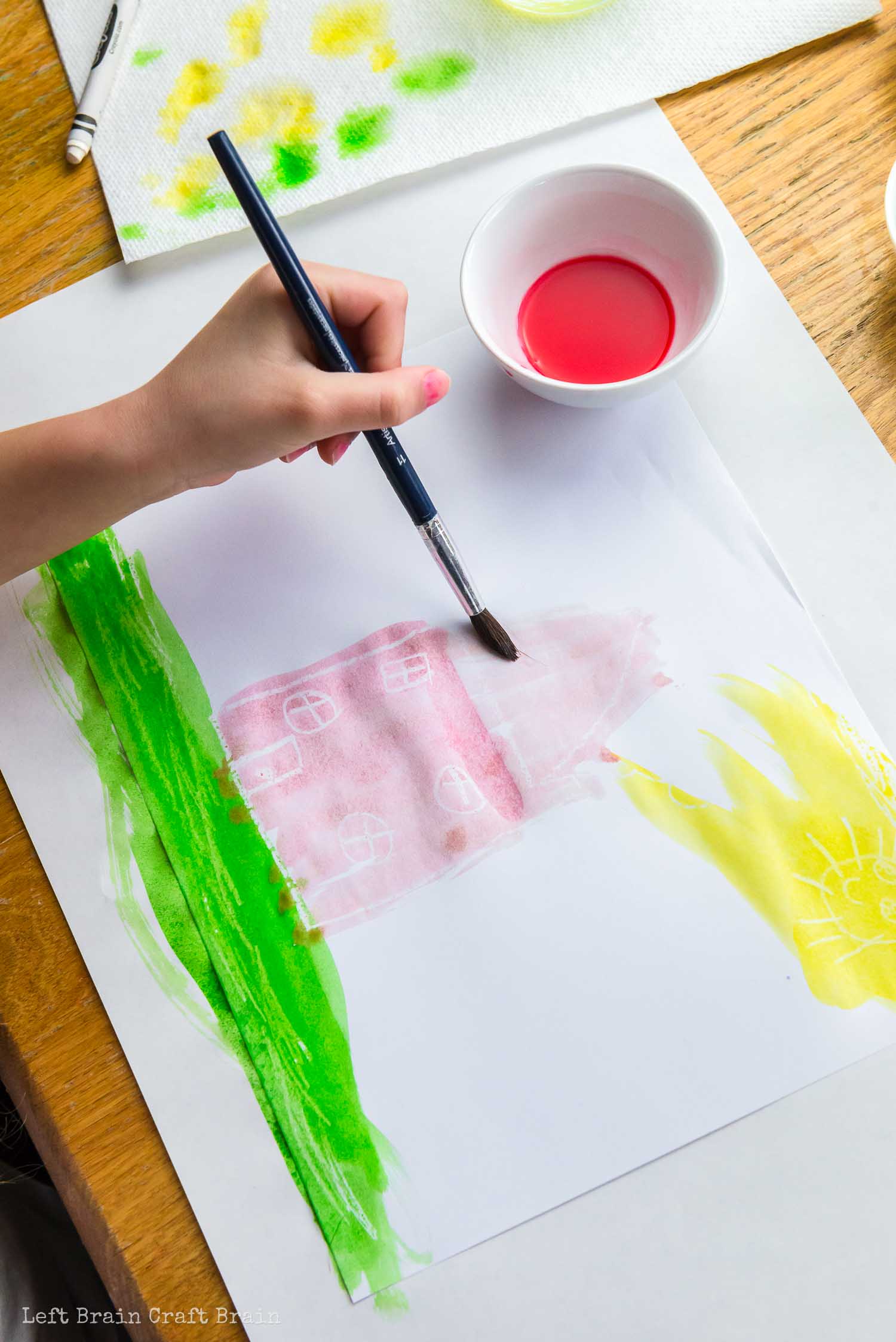
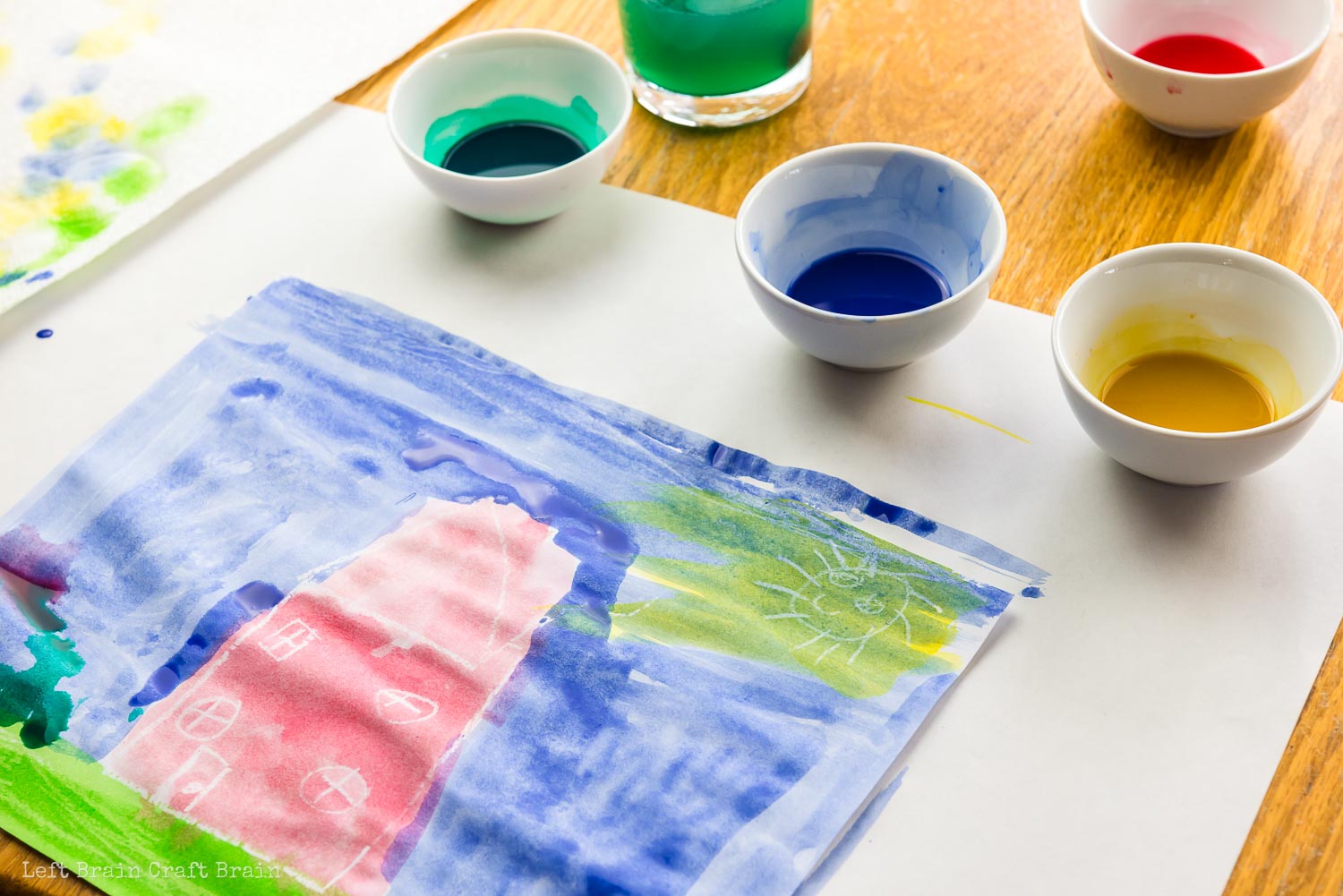
Be sure to try some secret messages too!
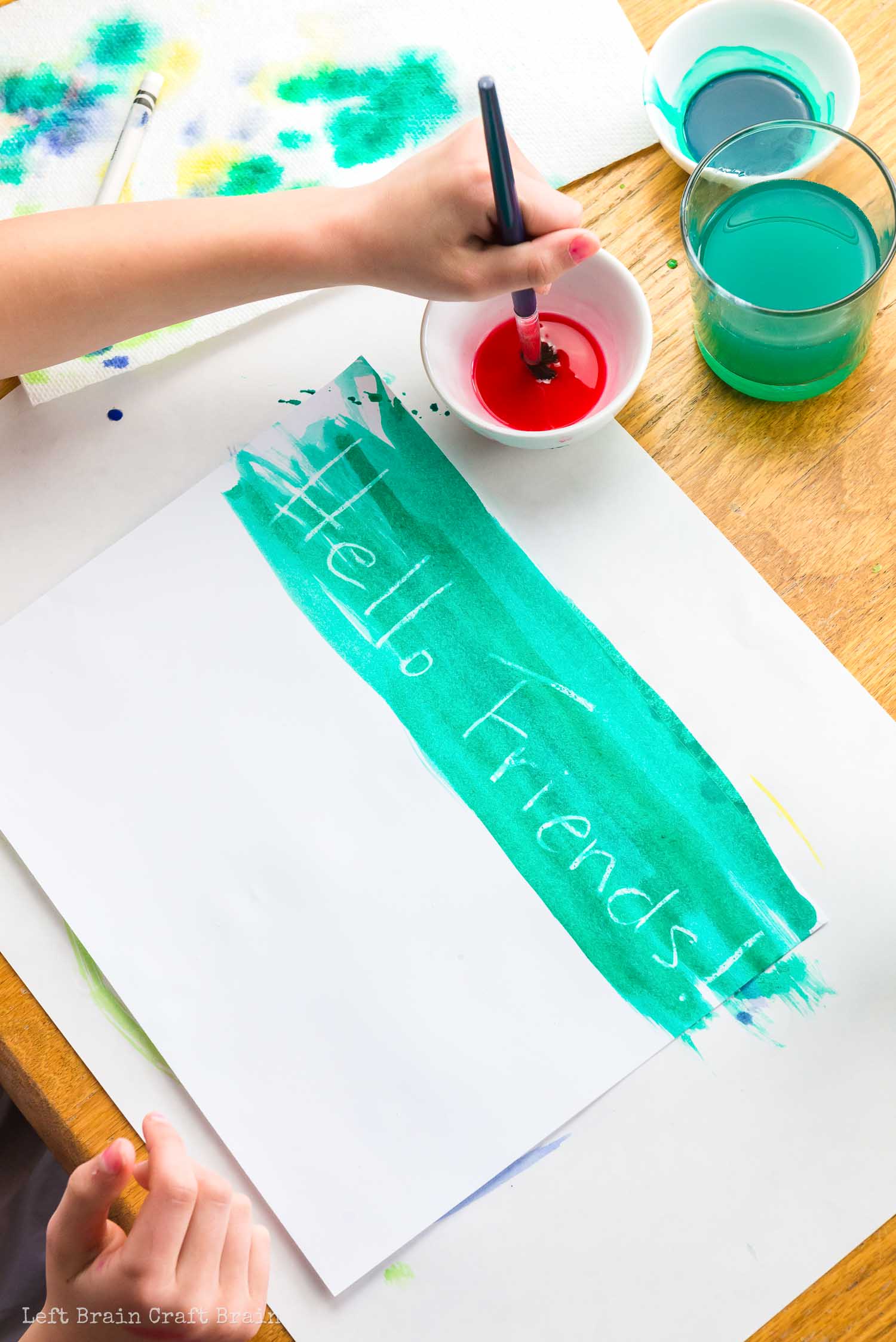
Traveling Watercolors
Traveling watercolors are a fun combo of science and art. The kids will be amazed at how the color moves! Liquid watercolors work best for this one.
- Create 3-4 color mixtures with water and liquid watercolors or food coloring in a cup.
- Place a piece of paper in a tray.
- Create a design on the paper in white glue lines. The lines should connect to make this work the best.
- Pour salt over the glue design until covered. Pour off the extra salt.
- Drip watercolors on lines with a pipette and watch the color travel.
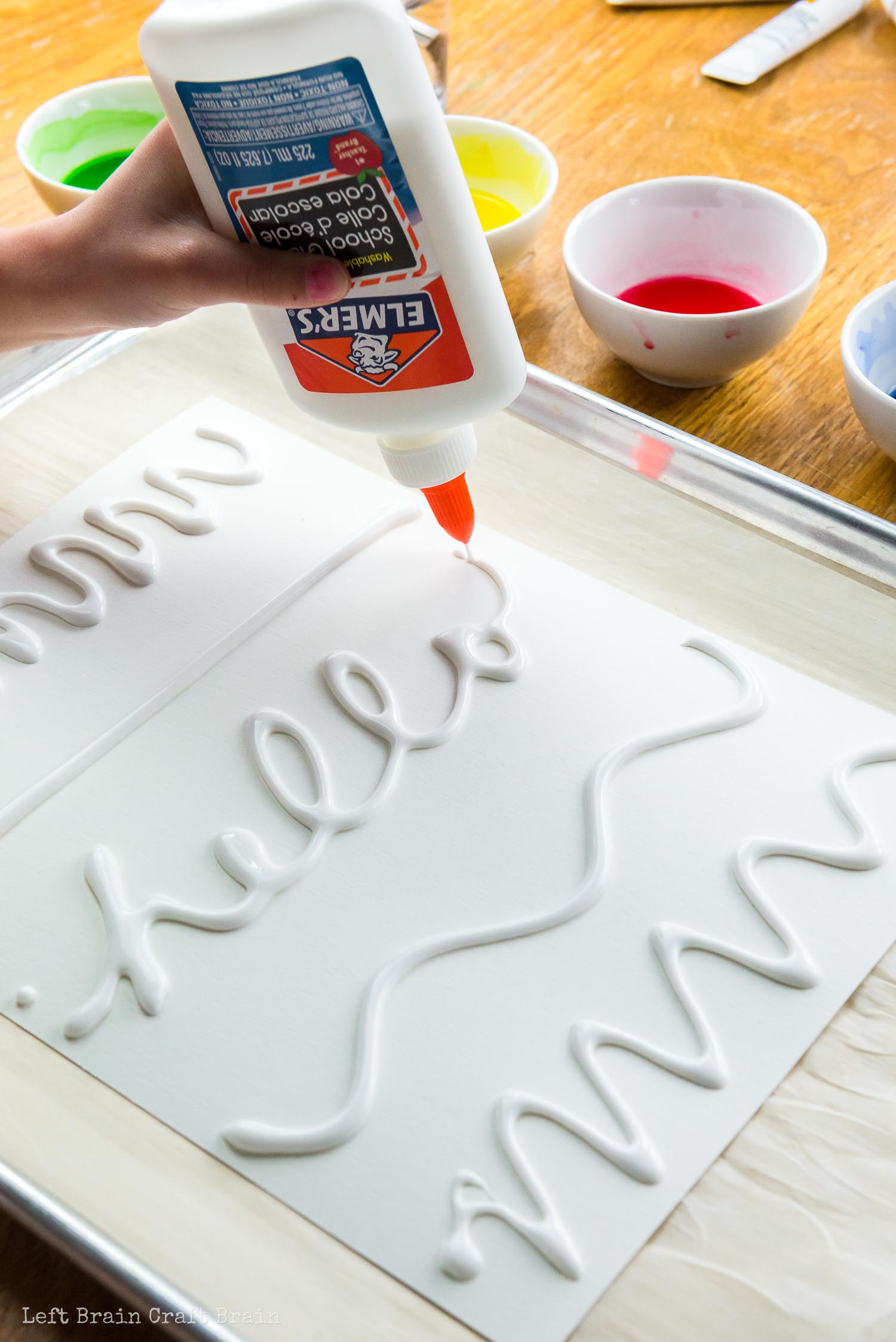
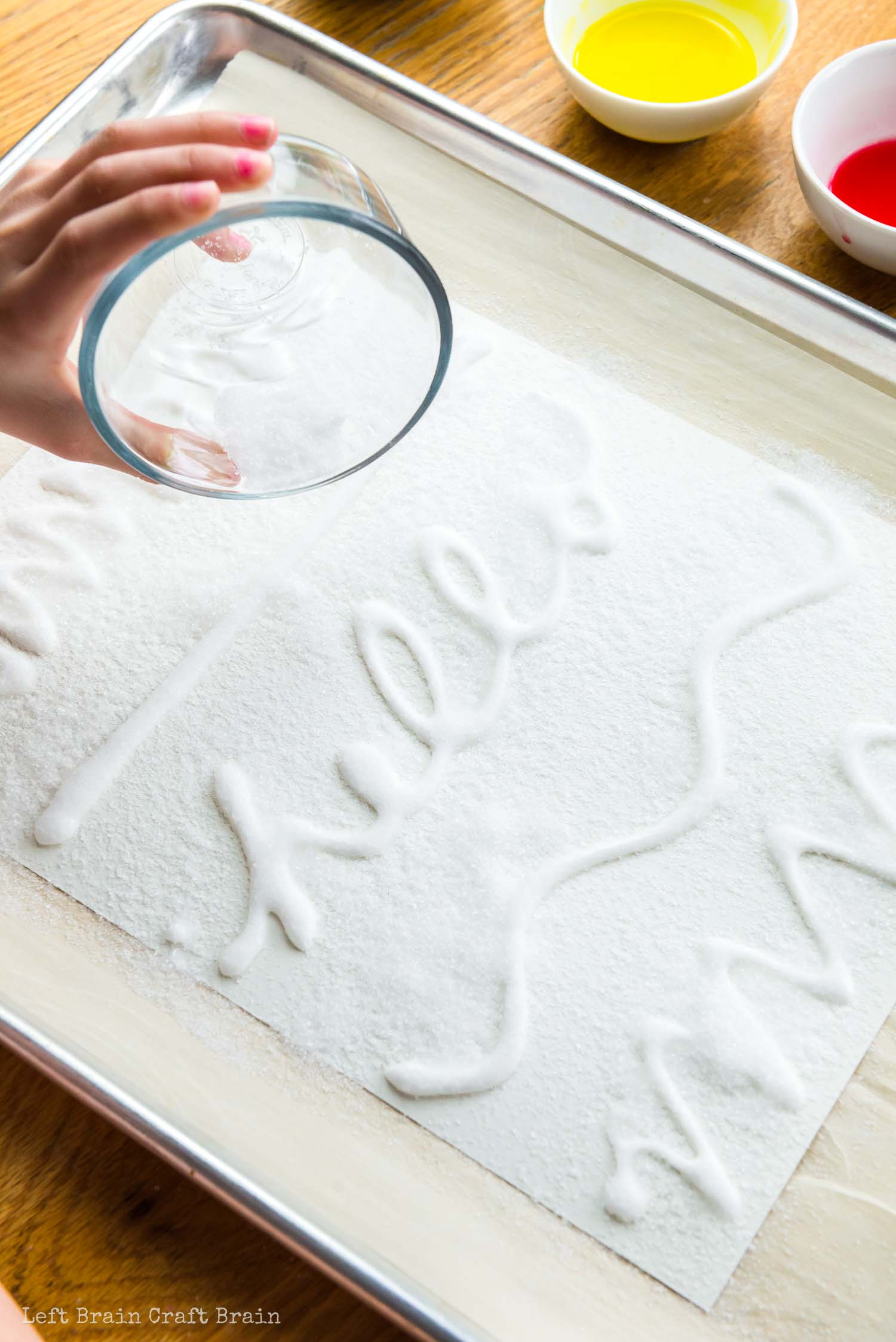

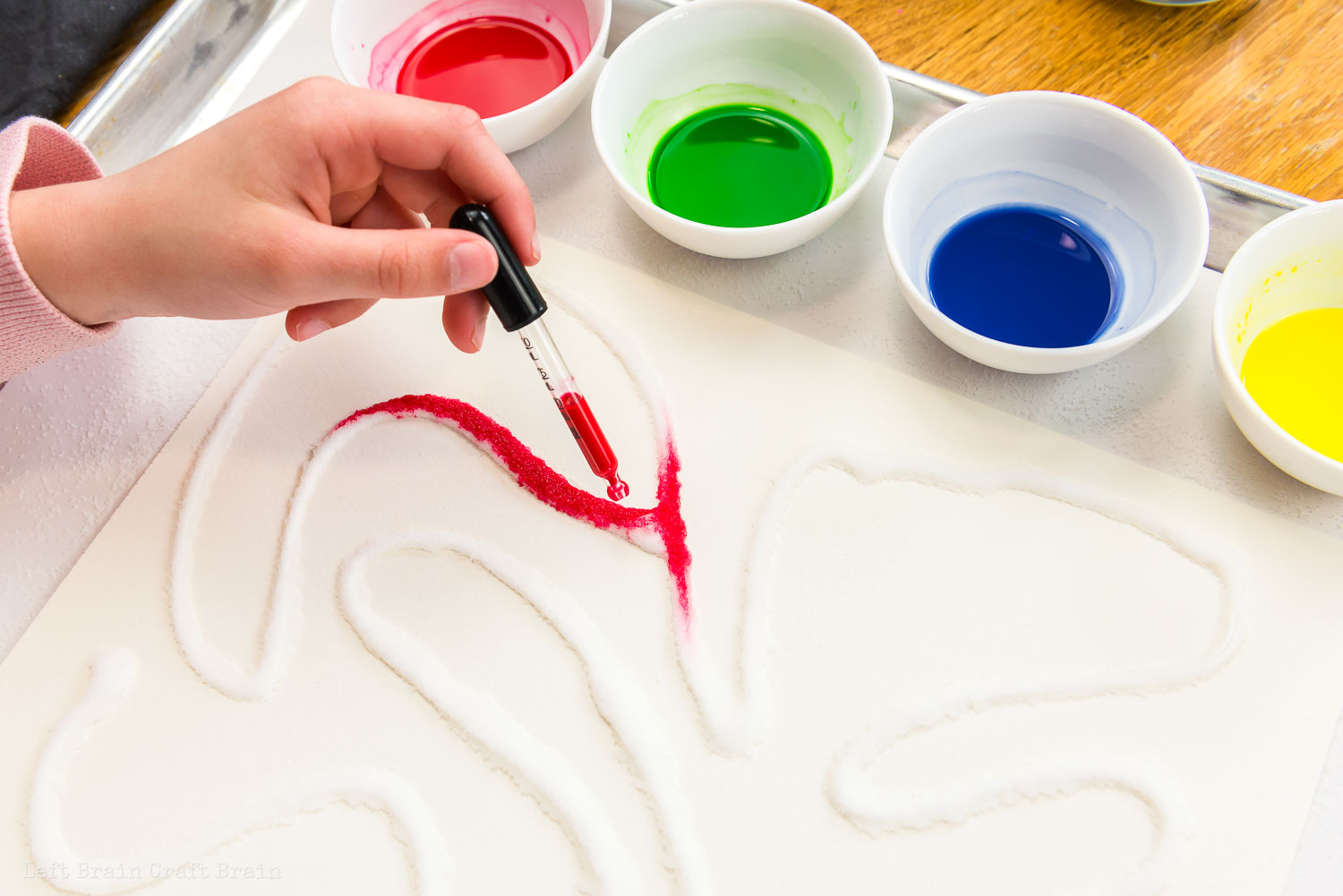
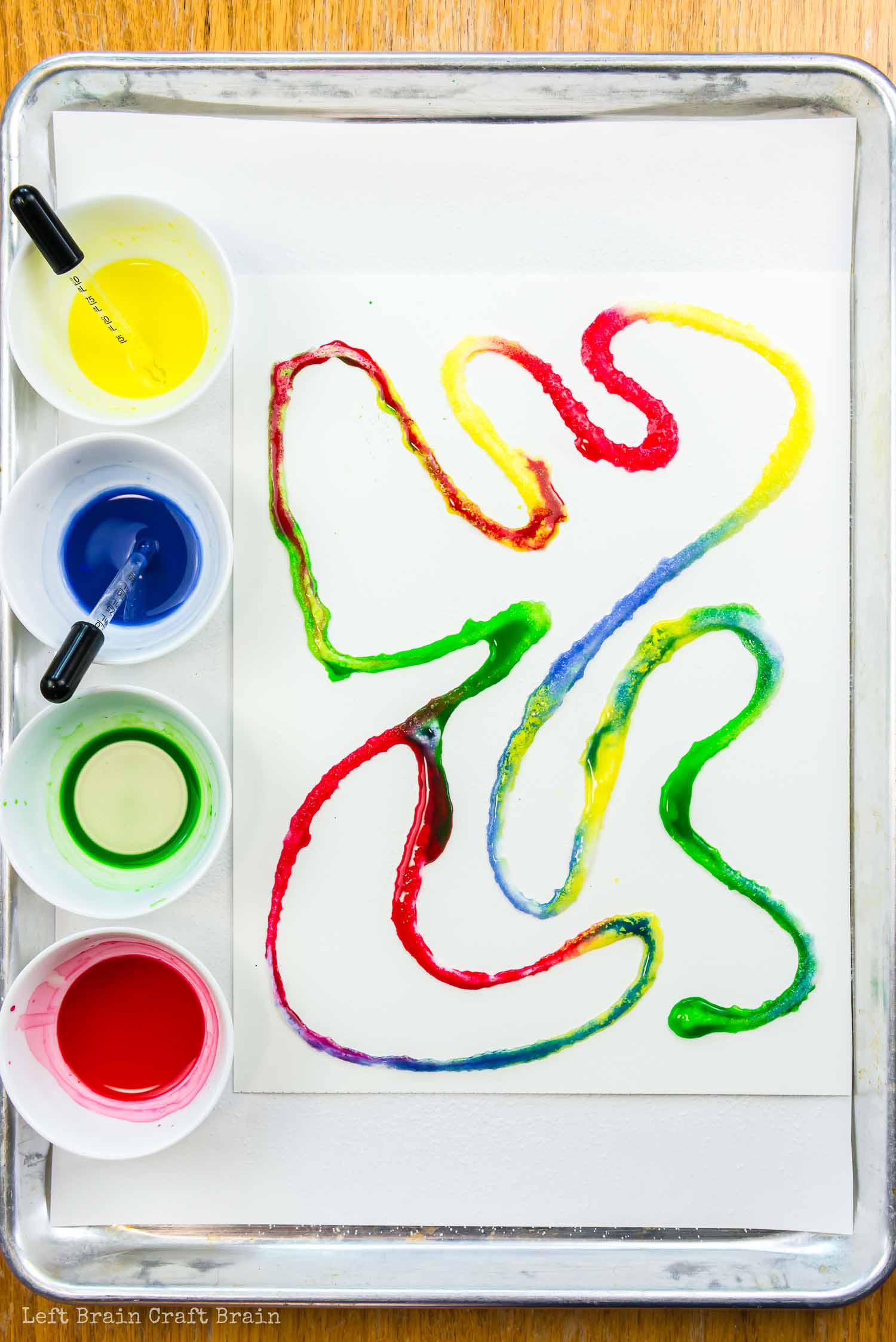
Watercolors & Alcohol & Salt
Watercolors have amazing properties that allow them to be manipulated in art. Rubbing alcohol and salt are great things to try.
- Paint a design or abstract pattern with watercolors on paper.
- While the watercolors are still wet, spray or drop with a pipette some rubbing alcohol on the paper.
- Then try sprinkling some salt crystals in different areas of the painting. How do the patterns differ?
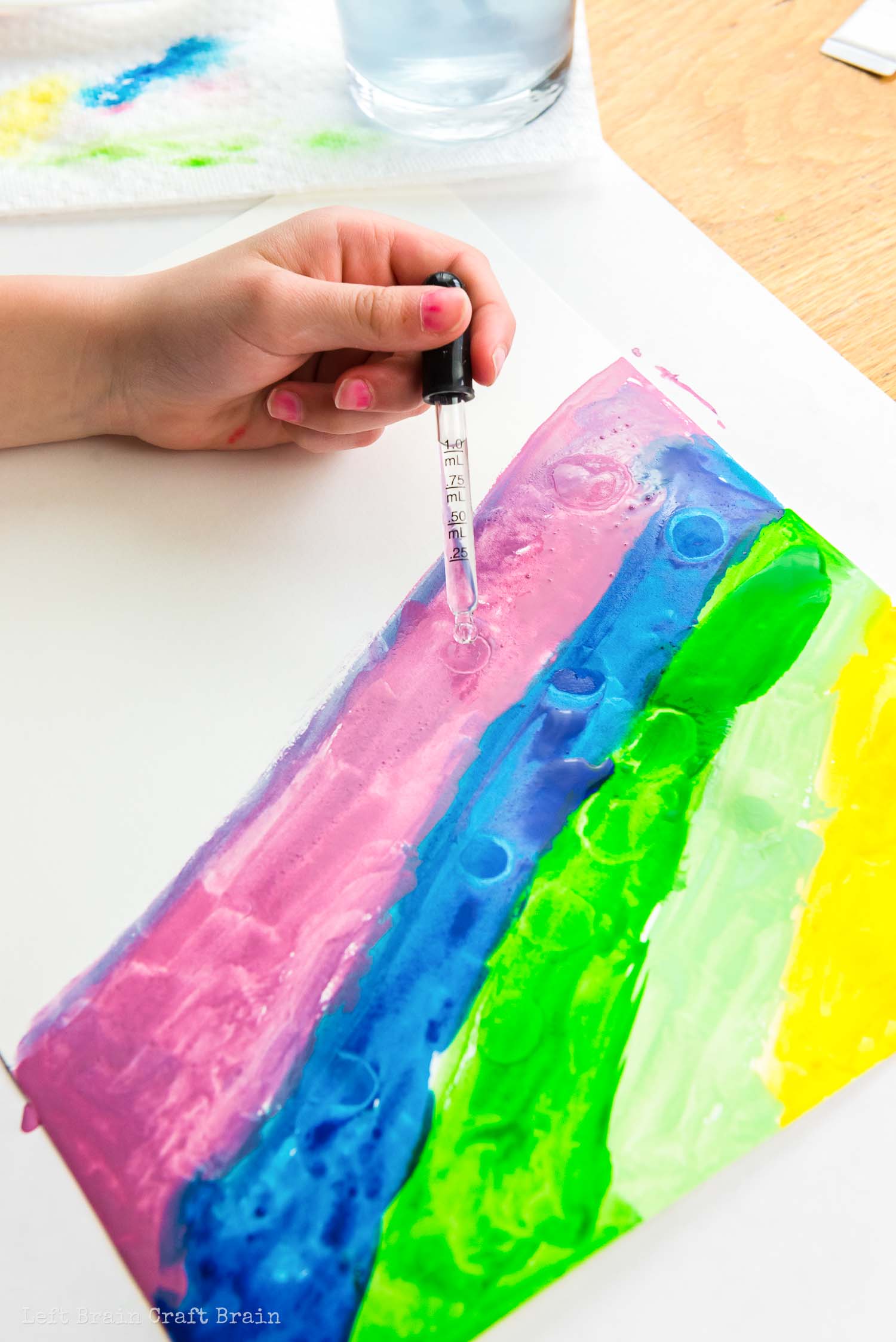
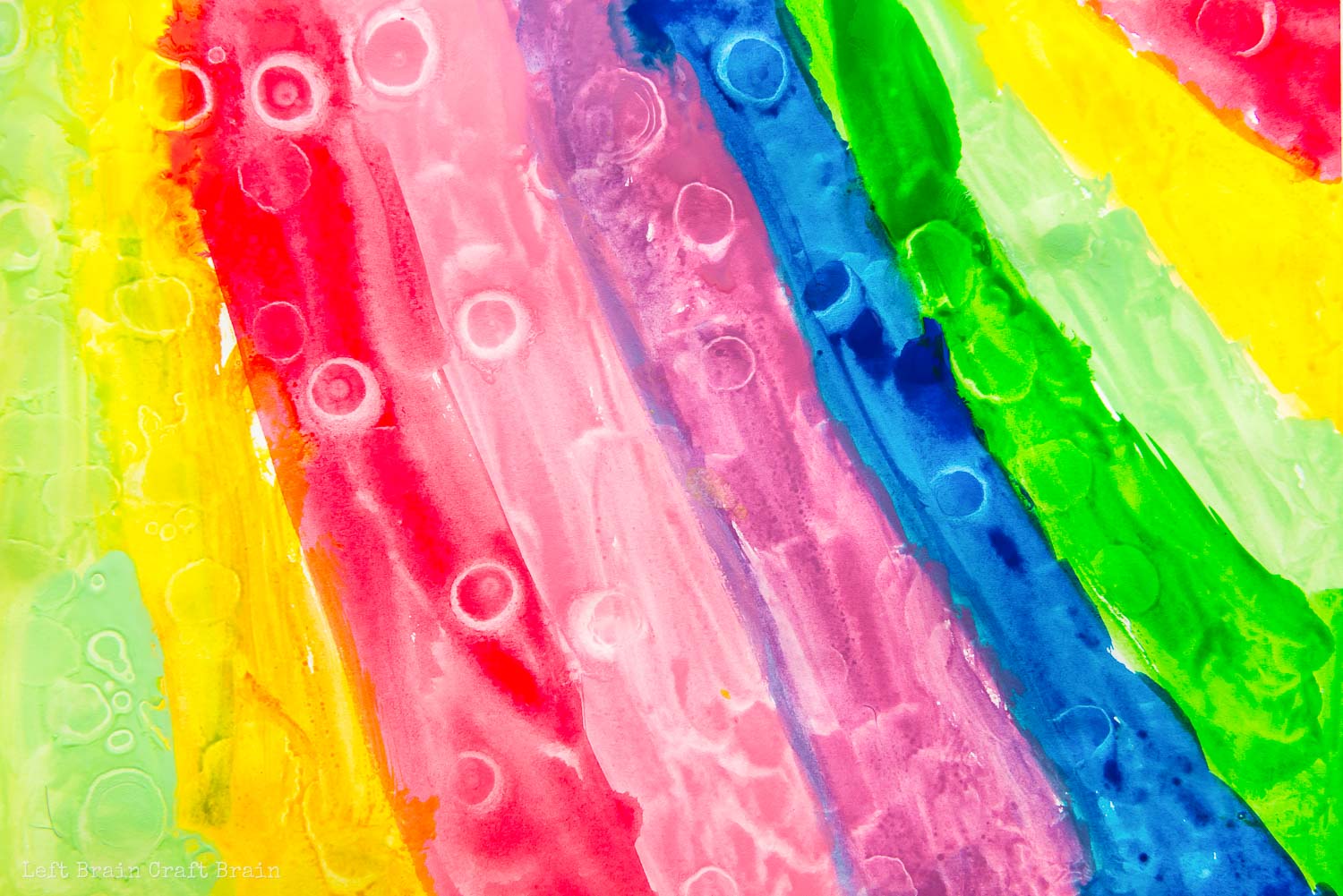
Watercolor Houses
Liquid watercolors can add a unique touch to your next building project. Nothing like color and gravity to make a STEAM project cool! Check out these Watercolor Houses that come with a free printable template.
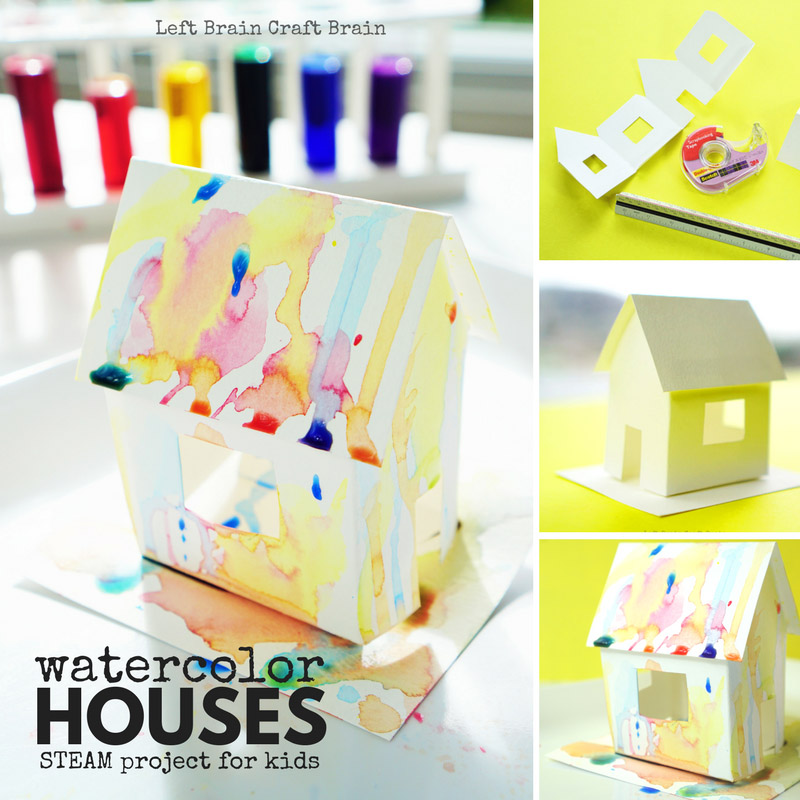
Science of Watercolors
Watercolor artists use lots of different techniques to create unique paintings, and you can too! Plus, watercolors are a science experiment in disguise. There are a few different scientific principles happening in these art activities.
First is solubility. The binders in palette watercolors dissolve in water and allow the pigments to spread on the paper. In crayon or wax resist painting, the watercolors don’t stick over the white crayon drawings. That’s because the wax in the crayons is hydrophobic (water-hating or repelling) and will prevent the watercolors from absorbing into the paper. In the traveling watercolors salt paintings, absorption is at play. The salt absorbs the water in the watercolors, making the color appear to travel down the design. In the alcohol treated painting, you get interesting textures because the alcohol and the water quickly mix together, causing the pigments to spread away.
More Art Fun for Kids
We love getting creative with all kinds of art around here. Here’s a list of some of our favorite Art Projects for Kids.
